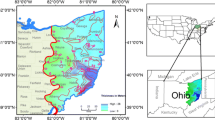Overview
Strategies of the environmental rehabilitation of water resource systems are usually characterised by multiple performance indicators which represent interests of different social groups. To support negotiations aimed at the solution of problems of this kind, we use a computer methodology based on the Feasible Goals Method (FGM) coupled with the Interactive Decision Maps (IDM) technique. The methodology provides the display of objective tradeoffs among performance indicators informing by this negotiators, experts and public opinion on potentialities of choice and on nondominated combinations of indicators. Moreover, it includes the development of efficient environmental rehabilitation strategies which may be displayed using various multimedia and virtual reality tools as well as the Geographical Information Systems. The FGM/IDM technique may be used for supporting both planning as well as negotiations. An example of planning support system based on the FGM/IDM technique is provided. The concept of the INTERNET-based Active Public Information Clearing House devoted to informing the public opinion on the environmental rehabilitation problems is introduced.
Access this chapter
Tax calculation will be finalised at checkout
Purchases are for personal use only
Preview
Unable to display preview. Download preview PDF.
Similar content being viewed by others
References
Bushenkov, V.A., O.L. Chernykh, G.K. Kamenev and A.V. Lotov (1995), “Multi-Dimensional Images Given by Mappings: Construction and Visualization,” Pattern Recognition and Image Analysis, Vol. 5, No. 1, pp. 35–56.
Bushenkov, V., F. Ereshko, J. Kindler, A. Lotov and L. de Mare (1982), “Application of the GRS Method to Water Resources Problems in Southern Skane, Sweden,” Working Paper WP-82–120, International Institute for Applied Systems Analysis, Laxenburg, Austria.
Bushenkov, V., V. Kaitala, A. Lotov and M. Pohjola (1994), “Decision and Negotiation Support for Transboundary Air Pollution Control Between Finland, Russia and Estonia, Finnish Economic Papers, Vol. 7, No. 1,pp. 69–80.
Bushenkov, V.A. and A.V. Lotov (1980), “Methods and Algorithms for Analyzing Linear Systems by Constructing of Generalized Sets of Attainability,” USSR Computational Mathematics and Mathematical Physics, Vol. 20, No. 3, pp. 38–48.
Bushenkov, V.A. and A.V. Lotov (1983), “Analysis of Potentialities of a Region in Multi-Regional Multi-Industrial Model of World Economy,” in: A.G. Granberg and S.M. Menshikov (eds.), Multi-Regional Multi-Industrial Models of World Economy, Nauka Publishing House, Novosibirsk, pp. 202–217 (in Russian).
Charnes, A. and W.W. Cooper (1961), Management Models and Industrial Applications of Linear Programming, John Wiley and Sons, New York, NY.
Gass, S. and T. Saaty (1955), “The Computational Algorithm for the Parametric Objective Function,” Naval Research Logistics Quarterly, Vol. 2, pp. 39–51.
Fisher, R. W. and Uri (1981), Getting to YES, Penguin Books, New Jersey.
Kamenev, G.K. (1992), “A Class of Adaptive Algorithms for Approximating the Convex Bodies by Polyhedra.”’ USSR Computational Mathematics and Mathematical Physics, Vol. 32, No. 1, pp. 114–127.
Kamenev, G.K. and D.L. Kondratiev (1992), “On a Method for the Study of Nonclosed Nonlinear Models,” Matematicheskoe Modelirovanie, Vol. 4. No. 3, pp. 105–118 (in Russian).
Kamenev, G.K., A.V. Lotov and P. van Walsum (1986), “Application of the GRS Method to Water Resources Problems in the Southern Peel Region of the Netherlands,” Collaborative Paper CP-86–19, International Institute for Applied Systems Analysis, Laxenburg, Austria.
Lomov, B.F. (1984), Methodological and Theoretical Problems of Psycology, Nauka Publishing House, Moscow (in Russian).
Lotov, A.V. (1972), “Numerical Method of Constructing Attainability Sets for a Linear Control System,” USSR Computational Mathematics and Mathematical Physics, Vol. 12, No. 3, pp. 279–283.
Lotov, A.V. (1983), “Coordination of Economic Models With the Help of GRS,” in: E.L. Berlyand and S.B. Barabash (eds.), Mathematical Methods for Analysis of Interaction Between Industrial and Regional Systems, Nauka Publishing House, Novosibirsk, pp. 36–44 (in Russian).
Lotov, A.V. (1984), Introduction into Mathematical Modelling of Economic Systems, Nauka Publishing House, Moscow (in Russian).
Lotov, A.V. (1989), “Generalized Reachable Sets Method in Multiple Criteria Problems,” in: Methodology and Software for Interactive Decision Support, Lecture Notes in Economics and Mathematical Systems, Vol. 337, Springer-Verlag, Berlin, pp. 65–67.
Lotov, A.V. (1994), Integrated Assessment of Environmental Problems, Computing Center of Russian Academy of Sciences, Moscow (in Russian).
Lotov, A.V. V.A. Bushenkov, O.L. Chernykh and N.V. Zezulinsky (1991), “Study of Environmental Problems by Means of the Multiple Criteria GRS Method,” Laboratory Work, Moscow University for Physics and Technology, Moscow.
Lotov, A. O.Chernykh and O. Hellman (1992), “Multiple Objective Analysis of Long-Term Development Strategies for a National Economy,” European Journal of Operational Research, Vol. 56, No. 2, pp. 210–218.
Moiseev, N.N. (1990), Mankind and Noosphere, Molodaya Guardia Publishing House, Moscow (in Russian).
Raiffa, H. (1982), The Art and Science of Negotiations, Belknap Press of Harvard University, England.
Steuer, R.E. (1986), Multiple Criteria Optimization, John Wiley and Sons, New York.
Thiessen, E.T. and D.P. Loucks (1992), “Computer Assisted Negotiation of Multiobjective Water Resource Conflicts,” Water Resources Bulletin, Vol. 28, No. 1, pp. 163–177.
United Nations (1988), Assessment of Multiple Objective Water Resources Projects,New York.
Author information
Authors and Affiliations
Editor information
Editors and Affiliations
Rights and permissions
Copyright information
© 1998 Springer Science+Business Media Dordrecht
About this chapter
Cite this chapter
Lotov, A.V. (1998). Computer-Based Support for Planning and Negotiation on Environmental Rehabilitation of Water Resource Systems. In: Loucks, D.P. (eds) Restoration of Degraded Rivers: Challenges, Issues and Experiences. NATO ASI Series, vol 39. Springer, Dordrecht. https://doi.org/10.1007/978-94-017-2894-2_25
Download citation
DOI: https://doi.org/10.1007/978-94-017-2894-2_25
Publisher Name: Springer, Dordrecht
Print ISBN: 978-90-481-4991-9
Online ISBN: 978-94-017-2894-2
eBook Packages: Springer Book Archive




